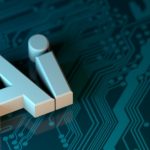The integration of artificial intelligence (AI) into fast-food drive-thrus has been a growing trend, aimed at enhancing efficiency and reducing labor costs. A prominent example is McDonald’s, which partnered with IBM in 2021 to deploy an AI system for voice ordering at about 100 locations across the United States. However, the initiative has faced considerable challenges, leading to the company’s decision to discontinue the project by July 31, 2024. More details can be found here.
The Pros of AI Drive-Thrus
AI technology offers several benefits that initially attracted companies like McDonald’s to explore its potential in drive-thrus. Rising labor costs and difficulties in staffing make AI an attractive option for taking orders, potentially providing significant cost savings. Moreover, AI systems are designed to understand complex customer requests, utilize past order data for personalized recommendations, and reduce human error, leading to a more efficient service experience, especially during peak hours.
The promise of a faster, frictionless drive-thru experience further underscores AI’s potential in the industry. By immediately processing orders without human intervention, AI can streamline operations and enhance customer satisfaction. Despite these advantages, McDonald’s encountered significant issues that overshadowed the prospective benefits.
The Negatives – and Where McDonald Has Stumbled
The viral failures of McDonald’s AI drive-thru system highlight the technology’s current limitations. The AI frequently struggled with basic tasks, such as accurately capturing orders, leading to customer dissatisfaction and order inaccuracies. These problems could negate any labor cost savings by introducing new inefficiencies and costs.
The system’s inability to handle diverse accents, off-menu requests, and unique phrasings as effectively as human workers raises questions about AI’s feasibility in this setting. Additionally, the “uncanny valley” effect, where AI’s responses are almost but not quite human-like, can create an unsettling experience for customers, suggesting that AI may need further refinement before it can replace human workers in this context.
The Future of AI Drive-Thrus
Despite the setbacks, McDonald’s remains optimistic about AI’s role in the future of drive-thrus. The company views the IBM project as a valuable learning experience that will contribute to developing scalable, long-term solutions. Other fast-food giants, including Chipotle, Wendy’s, Taco Bell, and Pizza Hut, are also exploring AI integration in their drive-thrus, indicating a broader industry trend towards automation.
Consensus among experts suggests that AI drive-thru ordering is still in its infancy, and significant milestones need to be achieved before it becomes universal. Rapid advancements in AI language models may eventually overcome current issues, making AI a viable option for streamlining drive-thru operations. A phased approach where customers can choose between AI and human attendants might also help build trust and acceptance of the technology over time.
McDonald’s example illustrates the challenges of pioneering new technology and highlights the need for cautious implementation. While the fast-food industry continues to explore AI for drive-thrus, the journey towards a seamless, AI-driven experience is ongoing and will require substantial development and testing.










